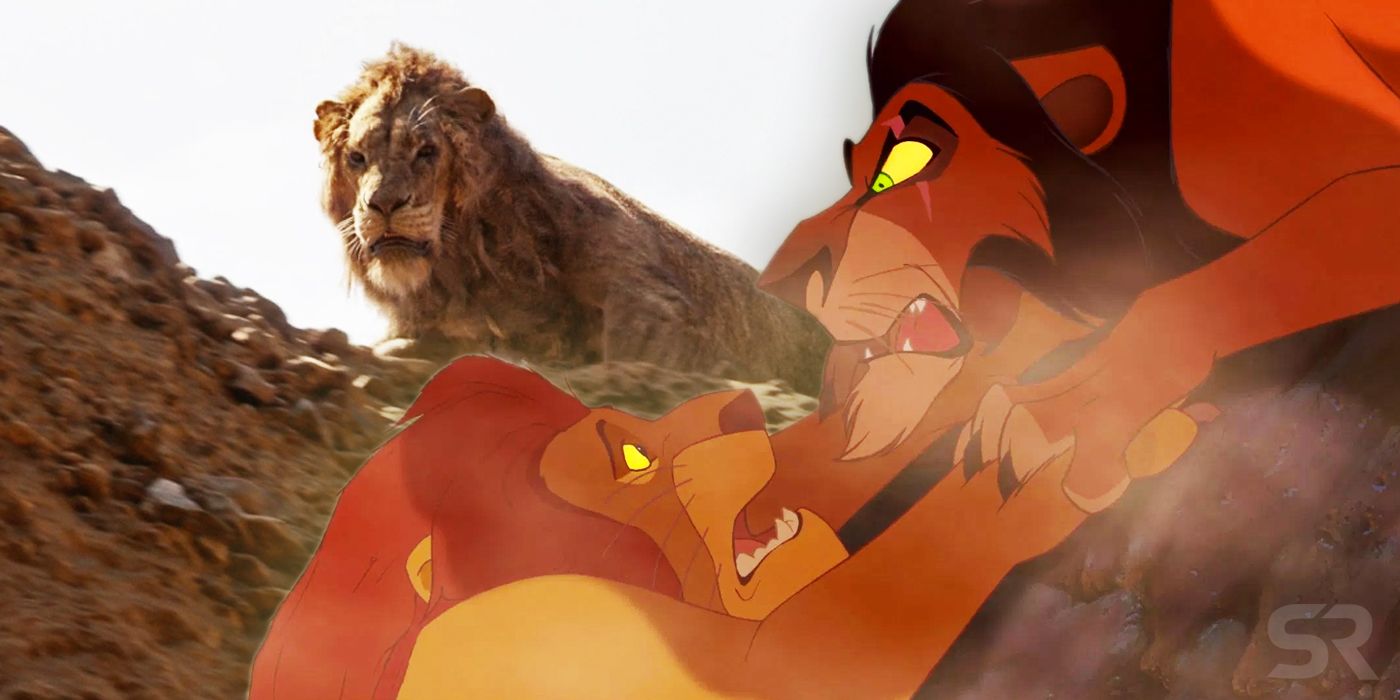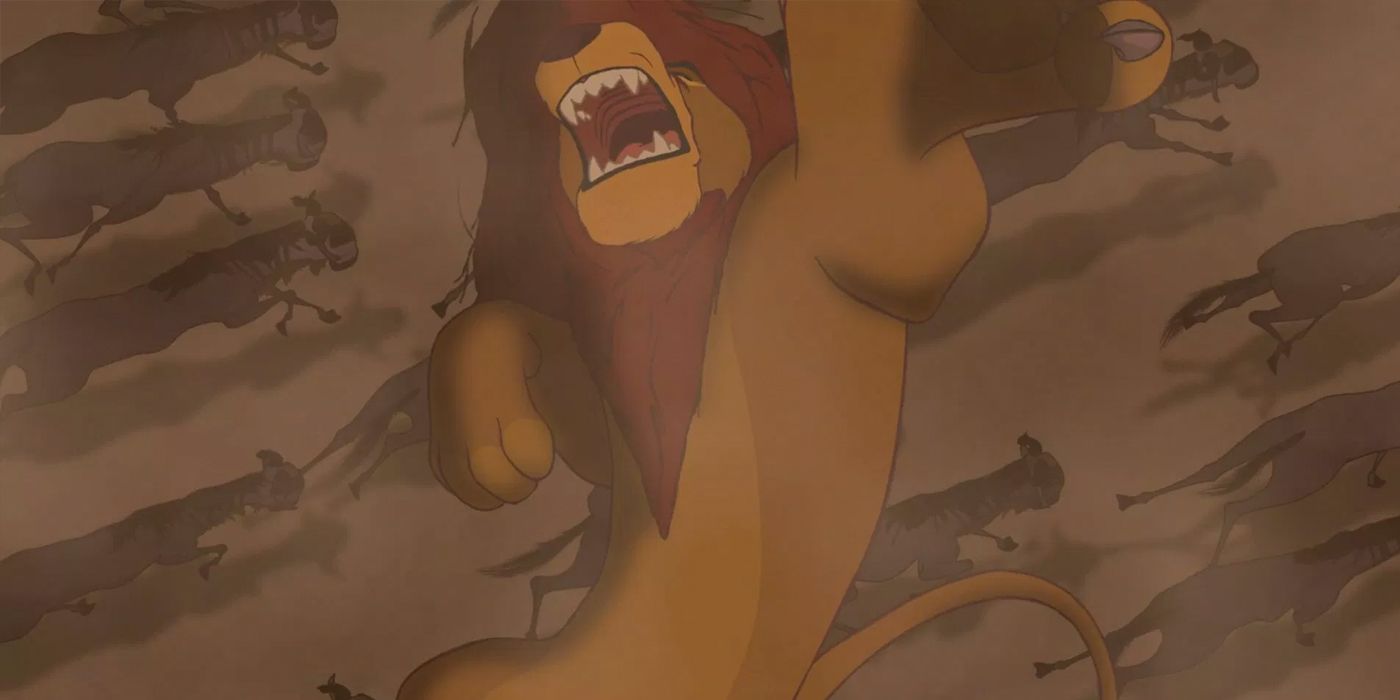WARNING: Mild spoilers for The Lion King 2019.
The Lion King 2019 makes several changes to the 1994 animated original, including the minutiae of Mufasa's death. The death of the king is one of the most iconic moments in all of Disney: after saving son Simba from a stampede of wildebeest, Mufasa is sent falling to his death by scheming brother Scar.
For the most part, Mufasa is one of the most consistent elements between versions of The Lion King. Of course, in Jon Favreau's 2019 version he is once again voiced by James Earl Jones, but even when it comes down to the dialogue the literally irreplaceable actor has to deliver, there's not much variance. Subtle changes are made - such as the suggestion that he was one who gave Scar his namesake injury - but these are glancing at best.
Eagle-eyed viewers will notice that changes with Mufasa's death scene. Beat-for-beat, The Lion King 2019's stampede sequence plays out the same - Hyenas attack wildebeest, Simba is trapped, Mufasa helps him and climbs out, Scar knocks him back down - but there are some subtle adjustments. In the new movie, the rocks that Mufasa uses to escape the gorge are loose and covered in shale, making his ascent harder. And, more strikingly, instead of gorging his claws into his brother's paws, Scar hits Mufasa in the face to send him flying.
Minor though they may be, there's a whiff of Disney revisionism to these changes. One of the most defining traits of the Mouse House's parade of live-action remakes is how they attempt to address well-worn nitpicks or fill tiny narrative gaps - see why the servants were turned into household items in Beauty and the Beast or how Aladdin tricked everybody with a made-up country - often at the detriment of the wider narrative. For The Lion King, having the canyon side harder to climb seems to be intended to explain why the powerful Mufasa would ask his physically weak brother for help in the first place.
Scar's strike, on the other hand, looks to be a result of The Lion King's slavish approach to photo-realism. The manner of the kill in the original works fine in animation, but is a little too dynamic and exaggerated for the real-life lions that Favreau is attempting to evoke. This defining decision has been criticized by many, often based off isolated clips of songs like Hakuna Matata that lack the same dynamism of the original, although it must be said that - as a complete movie - The Lion King's choices create a striking experience.
All that said, overall Mufasa's doesn't carry the same level of emotion in The Lion King 2019 as its animated counterpart. The slight adjustments discussed here aside, the stampede sequence is one of the most glaring examples of The Lion King as a shot-for-shot remake, right down to the fast zoom-out on a shocked Simba as his father falls. While surely comes from a reverence for a moment that has broken as many young hearts as the loss of Bambi's mother, the presentation proves just too restrictive - and no amount of CG shale will fix that.
Mufasa's death is far from the only change The Lion King makes. Scar himself is presented entirely differently, as are his more autonomous Hyena henchmen. On the more successful side, Timon and Pumbaa's carefree (or is it careless?) lifestyle and opposition to the Circle of Life doctrine is greatly elaborated on (although their Beauty and the Beast moment will divide audiences). But it goes to show how, even when being highly faithful, small changes can have a surprising impact.


